|
Monday 24th to
Sunday 30th January 2022 |
| |
|
If you look due south around 10.30pm on
Thursday 27th you can see the brightest star in the night sky, Sirius - the
name being derived from the Greek word for "glowing". It is the alpha star
in the constellation of Canis Major. Stars in a constellation are allocated
letters of the Greek alphabet to identify them. Particularly significant
stars are also given names. |
| |
|
Sirius is one of our closest neighbours
outside the Solar System and is only 8.6 light years away from us. The star
is gradually moving closer to us and its brightness is expected to increase
slightly over the next 60,000 years. |
| |
|
A little below Sirius is the open cluster of
stars, identified by Charles Messier and given the designation M41. The
cluster contains around 100 stars including several red giants. It has a
magnitude of around +6.3 so cannot be seen with the naked eye, but a pair of
binoculars will do fine. M41 is 2300 light years away from us and is
estimated to be around 190 million years old. Further estimates give it a
life expectancy of about 500 million years before it disintegrates, so there
is plenty of time to observe it! |
| |
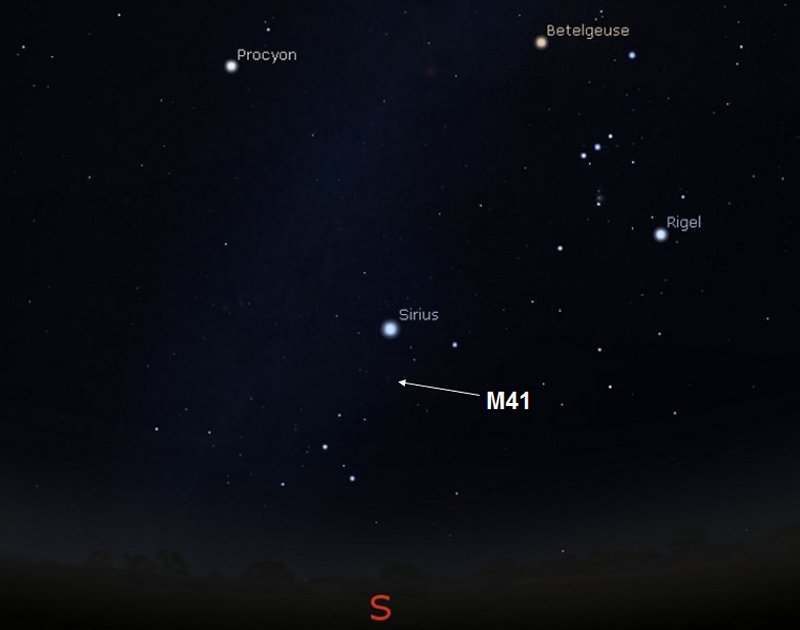 |
| |
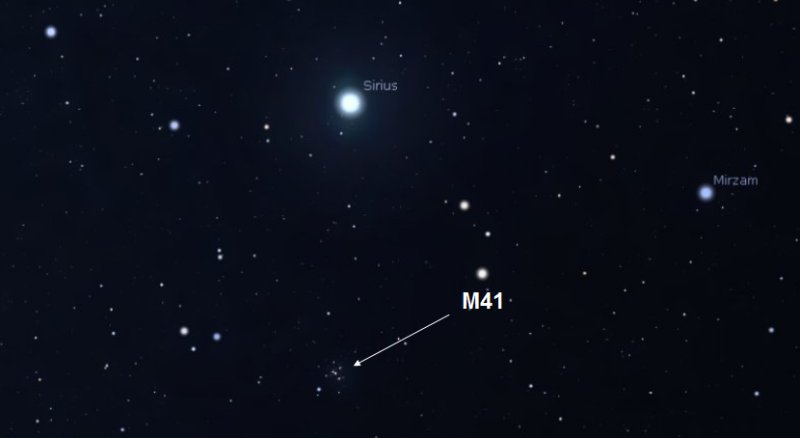 |
| |
|
Alternatively, if you are up early around 6am
on Friday 28th and look towards the south east, there will be a 21%-lit
crescent Moon, with Venus to the left of it. The Sun terminator, the border
between light and dark on the Lunar surface, will be illuminating the crater
Aristarchus which is the brightest feature on the nearside face of the Moon. |
| |
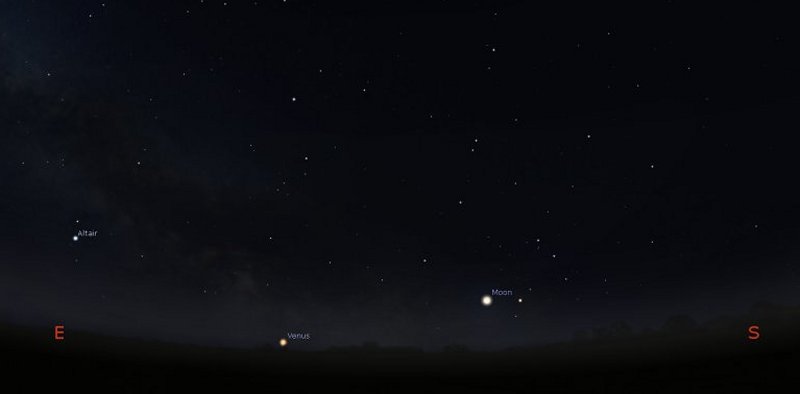 |
| |
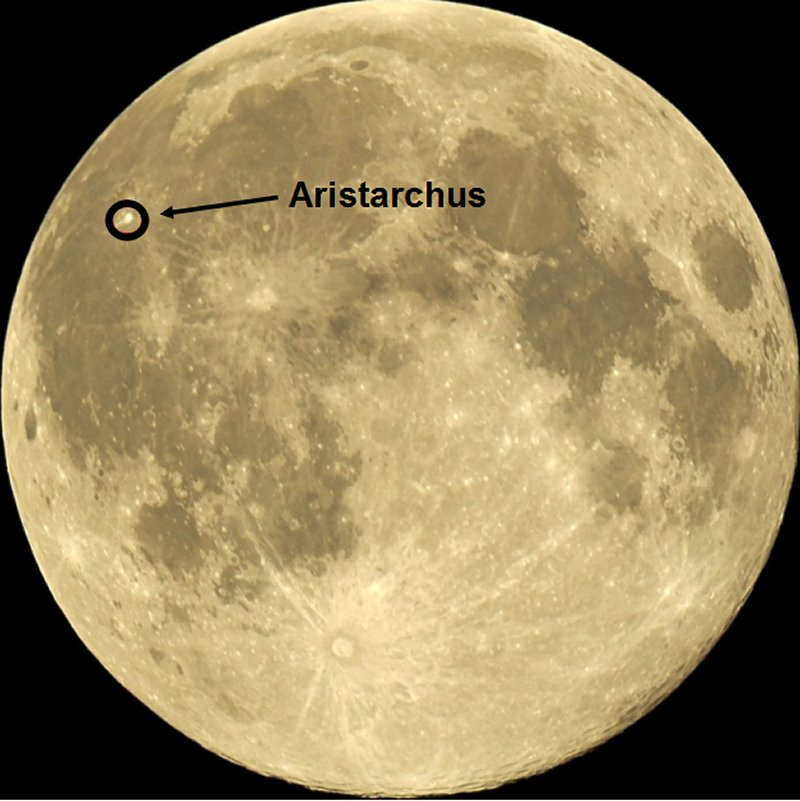 |
|
Monday 17th to
Sunday 23rd January 2022 |
| |
|
During the early evening, look high up
towards the north east and find the constellations of Cassiopeia (the
familiar "W" shape) and Perseus. Between the two constellations is an
object known as the Double Cluster. |
| |
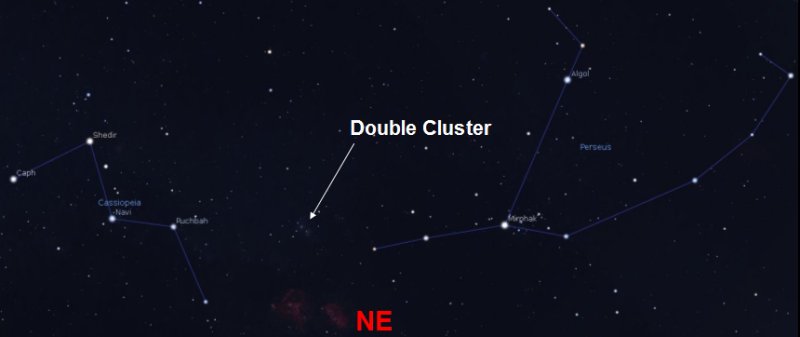 |
| |
|
This pair of open clusters was first
catalogued as a "patch of light" back in 130BC. They are relatively young,
only about 12 million years old and are gradually moving towards us at a
speed of approximately 30km/s. |
| |
|
With a magnitude of around +3.8, it will be
best to use binoculars or a small telescope. On Monday 17th there is a full
Moon, so that will create some light pollution. |
| |
|
While you are looking in that direction, take
a moment to identify the star Algol in Perseus. Algol, also known as the
"Demon Star", is actually a three-star system and as the stars pass in front
of each other, they cause eclipses. This means that the overall magnitude
of +2.2 drops to +3.4 every few days when viewed from Earth. |
| |
|
Moving to the evening of Saturday 22nd, there
will be an 83%-lit Gibbous Moon and an opportunity to make out the dark lava
patches of the Mare Orientale. It is situated right on the western edge of
the Moon's nearside, so can be quite difficult to spot. If you imagine the
moon as a clock face, Mare Orientale is located at about 8.30, just below
the crater Grimaldi. |
| |
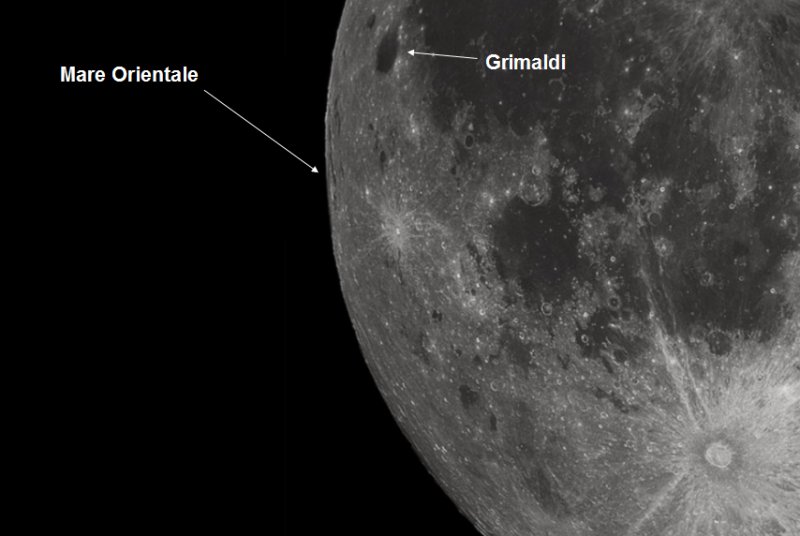 |
| |
|
The mare has been likened to a bull's-eye in
appearance and below is an image of Mare Orientale that was taken by NASA's
Lunar Orbiter 4 probe in 1967. |
| |
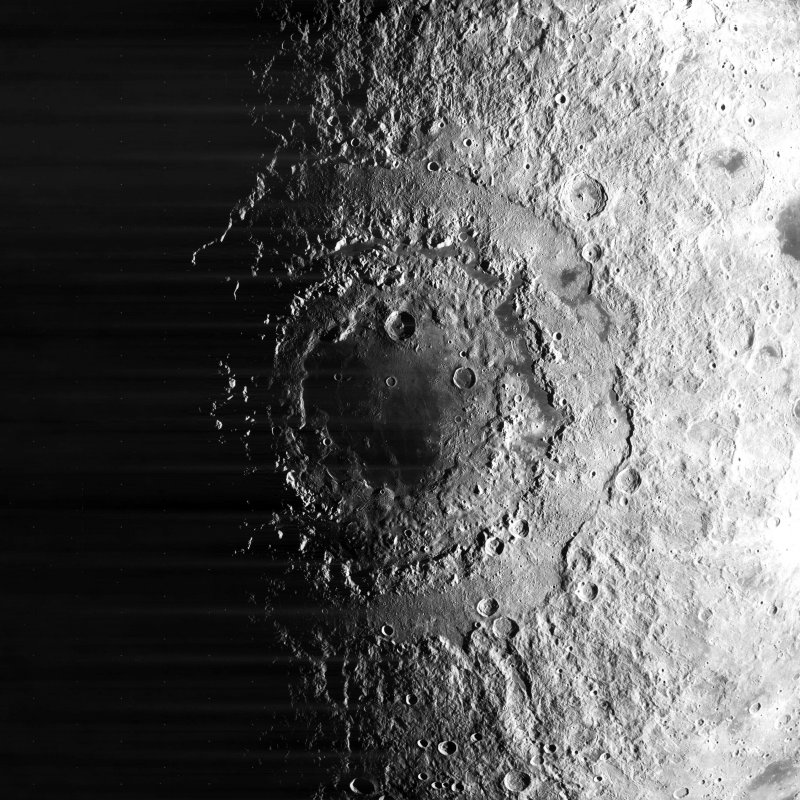 |
|
Monday 10th to
Sunday 16th January 2022 |
| |
|
We'll start next week with an opportunity to
observe another of the lunar "clair-obscur" visual effects. This time it's
the turn of the "Jewelled Handle" which is caused by the lunar dawn
illuminating the peaks of the Jura Mountains. It occurs during the evening
of Wednesday 12th and is best viewed with binoculars or a small telescope.
|
| |
|
Not to be confused with the Jura Mountains in
the French Alps, the lunar Montes Jura (to give them their correct name) are
located towards the north west nearside face of the Moon. To make it easier
to locate them, below is a diagram of the different "clair-obscur" effects,
courtesy of Sky at Night Magazine. |
| |
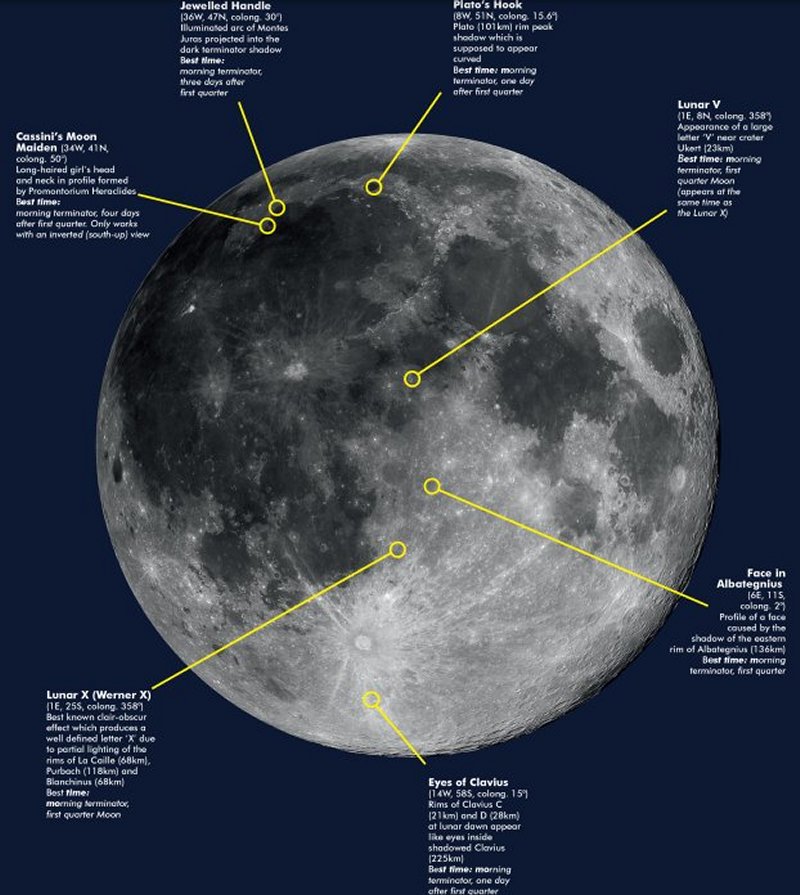 |
| |
|
If you fancy a bit of a challenge, on
Thursday 13th you could have a go a spotting the minor planet 7 Iris which
will be at magnitude +7.7. You will need those binoculars or a telescope
again because it is a bit too faint to be seen with the naked eye. |
| |
|
7 Iris will be located roughly halfway
between the stars Pollux in the constellation of Gemini and Procyon in Canis
Minor. Around 7pm on 13th, these constellations will be towards the east,
to the left of Orion. |
| |
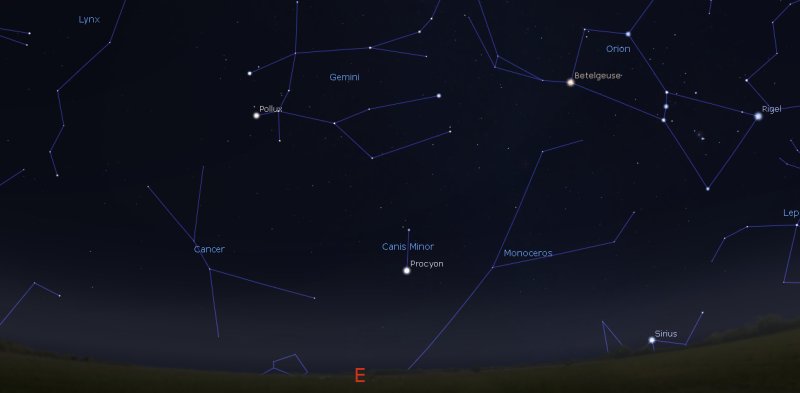 |
| |
|
7 Iris is one of the larger objects in the
main asteroid belt located between Mars and Jupiter. It is the 4th
brightest object in the asteroid belt due to its shiny surface and was first
discovered by astronomer J R Hind in 1847. Hind discovered and named
several asteroids, including one called 12 Victoria which caused quite a
controversy as at the time, asteroids were not supposed to be named after
living persons, but Queen Victoria was still on the throne! |
|
Monday 3rd to
Sunday 9th January 2022 |
| |
|
The evening of Monday 3rd into the morning of
Tuesday 4th sees the peak of the Quadrantids meteor shower, so named because
the radiant point where the meteors appear to originate from is near the
constellation of Quadrans Muralis. |
| |
|
Hang on......there is no constellation called
that! Well there used to be! The constellation was named by the French
astronomer Jerome Lalande back in 1795. Over the years, the number of stars
was reduced so that it didn't clash and cause confusion with the
constellations of Bootes and Draco. Then in 1922 the International
Astronomical Union deleted Quadrans from its list of 88 officially
recognised constellations. |
| |
|
So let's start again........the radiant point
is located to the left of the constellation Bootes, slightly down and left
from the tail of Ursa Major.
At midnight, you will need to be looking
towards the north east. |
| |
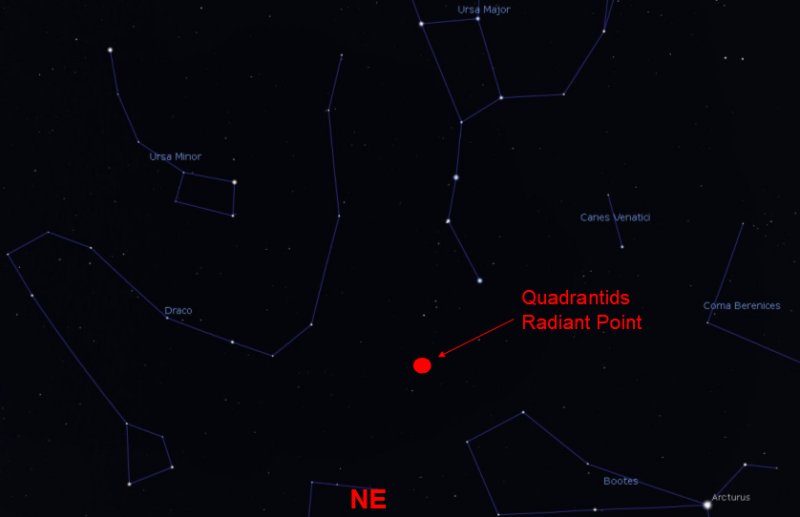 |
| |
|
The Quadrantids is famous for producing a
high number of bright meteors and this year it coincides with an almost New
Moon, so there will be minimal light pollution. |
| |
|
I should mention a very exciting piece of
space news that took place over the Christmas holidays - the successful
launch of the James Webb Space Telescope that is intended to be the
replacement for Hubble. It left Earth on Christmas Day and is currently
heading towards its destination a million miles away from us - no cloud up
there! |
| |
|
https://www.jwst.nasa.gov/ |









